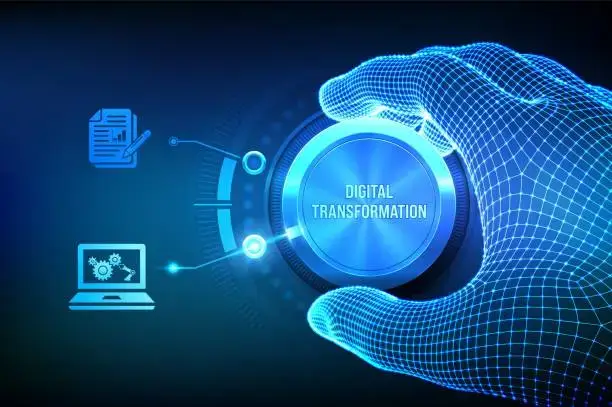Distributed computing is a popular method of computing that is rapidly growing in popularity.
This is particularly due to the rise of cloud computing, high-performance computing, and the internet of things (IoT).
Distributed systems are gaining ground due to the world’s ever-expanding technical development.
They are a broad and intricate area of computer science research.
This article seeks to provide a basic introduction to distributed computing, giving readers a sneak peek at its fundamental ideas and advantages.
What is Distributed Computing?
Distributed computing refers to the use of multiple computing resources to work on a common task or problem.
These resources can include servers, workstations, personal computers, mobile devices, and other devices that can connect to a network.
Multiple nodes in a distributed computing system communicate to complete a task.
On the other hand, centralised computing is where all computing resources are located in one location, usually a single server.
In this model, the server acts as a bottleneck, which can lead to performance issues and reduced scalability.
Distributed computing distributes resources across multiple nodes, increasing scalability and performance.
Distributed computing systems can take many forms, such as peer-to-peer networks, client-server architectures, and multiple-tier architectures.
In a peer-to-peer network, each node is equal and can communicate with other nodes directly.
In a client-server architecture, a central server manages and distributes tasks to the clients.
Multiple-tier architecture is a type of distributed computing that uses multiple client-server architecture resources to solve complex problems.
Read: An Introduction to Edge Computing

Types of Distributed Computing Architecture
You create applications for distributed computing that can operate on multiple computers instead of just one.
You accomplish this by creating the software so that various computers carry out various tasks and collaborate to create the end result.
The four major varieties of distributed architecture are as follows.
1. Client-server architecture
The most popular way of organizing software on a distributed system is client-server.
The system divides tasks into clients and servers.
Clients
Clients have a limited capacity for processing information.
They send queries to the servers instead, which are in charge of most of the data and other resources.
The client accepts your queries and interacts with the server on your behalf.
Servers
Server systems coordinate and control resource access.
They provide statistics or status updates in response to client requests.
Usually, one server can respond to queries coming from multiple machines.
Benefits and limitations
The advantages of client-server architecture include security and ongoing administration simplicity.
You only need to concentrate on protecting the server machines.
Similarly, any modifications to database systems call for only server-side adjustments.
Unfortunately, the client-server architecture risks communication bottlenecks when servers handle multiple queries simultaneously.
2. Three-tier architecture
In three-tier distributed systems, you first interact with client machines.
On the other side, there are two additional categories for server machines:
Application servers
Application servers function as the communication’s middle tier.
These servers handle the program logic or core operations of the distributed system.
Put Your Tech Company on the Map!
Get featured on Nicholas Idoko’s Blog for just $50. Showcase your business, boost credibility, and reach a growing audience eager for tech solutions.
Publish NowDatabase servers
The third layer for managing and storing the data comprises database servers.
They are in charge of data integrity and data retrieval.
Furthermore, three-tier distributed systems decrease communication bottlenecks and enhance the efficiency of distributed computing by dividing server responsibility.
3. N-tier architecture
N-tier models use multiple client-server systems that collaborate with one another to address the same issue.
Most contemporary distributed systems employ an n-tier architecture, with various enterprise apps collaborating as one system in the background.
4. Peer-to-peer architecture
Peer-to-peer distributed systems assign the same duties to all networked computers.
There is no distinction between client and server computers, and every computer can handle every task.
Moreover, peer-to-peer architecture has gained popularity for file streaming, blockchain networks, and content exchange.
Read: What Quantum Computing is and How it Will Change Everything
How Does Distributed Computing Work?
Distributed computing breaks problems into smaller pieces, distributing them across multiple computing resources.
Each node works on a specific portion of the task simultaneously.
Once complete, the pieces are sent back to a central node to be combined into the final result.
Additionally, to facilitate communication between nodes, distributed computing systems use communication protocols such as Message Passing interfaces (MPI) and Remote Procedure Calls (RPC).
These protocols allow nodes to exchange data and synchronize their work on the task.
Other system components include middleware, which manages the communication between nodes, and load balancers, which distribute the workload evenly across nodes.
One of the main challenges of distributed computing is managing the coordination and synchronization of multiple nodes.
This requires careful planning and management to ensure that each node works on the correct portion of the task at the right time.
Additionally, managing the security of distributed computing systems is critical, as data and tasks may be vulnerable to attack or unauthorized access.
Read: What is Cloud Computing?
Benefits of Distributed Computing
Scalability and Flexibility
Distributed computing offers high scalability, as resources can be added or removed as needed.
This makes it ideal for applications that require varying amounts of computing power, such as data processing, scientific computing, and web hosting.
In addition, it is highly flexible, as nodes can be added or removed from the network without disrupting the system.
Cost-Effectiveness
Distributed computing can be more cost-effective than centralized computing, as it allows for inexpensive hardware that may not be suitable for centralized computing.
For example, a distributed computing system can be created by using a collection of low-cost personal computers instead of expensive servers.
Additionally, it can reduce the need for dedicated computing resources, as nodes can be used for other purposes when they are not working on the distributed task.
Fault Tolerance and Reliability
Distributed computing systems are highly fault-tolerant, as they can continue functioning even if one or more nodes fail.
This is because tasks are distributed across multiple nodes, so the failure of one node does not affect the entire system.
This makes it ideal for applications requiring high reliability levels, such as scientific computing, financial modeling, and mission-critical systems.
Improved Performance and Faster Processing
Distributed computing can significantly improve performance and processing speeds, as tasks can be completed simultaneously across multiple nodes.
This means that a distributed computing system can complete tasks much faster than a single computer, even if that computer has more processing power.
Additionally, these systems can perform tasks in parallel, further speeding up the processing time.
Read: The Challenges and Opportunities of Real-time Data Processing

Real-World Applications of Distributed Computing
Cloud Computing
Cloud computing is a type of distributed computing that provides on-demand access to computing resources, such as servers, storage, and software applications, over the Internet.
It is highly scalable and flexible, making it ideal for applications that require varying amounts of computing power.
Some examples of cloud computing services include Amazon Web Services (AWS), Microsoft Azure, and Google Cloud.
Put Your Tech Company on the Map!
Get featured on Nicholas Idoko’s Blog for just $50. Showcase your business, boost credibility, and reach a growing audience eager for tech solutions.
Publish NowHigh-Performance Computing
High-performance computing (HPC) is a type of distributed computing that uses multiple nodes to solve complex problems that require large amounts of processing power.
HPC is used in various applications, including scientific computing, weather forecasting, and financial modeling.
Some examples of HPC systems include the National Science Foundation’s Extreme Science and Engineering Discovery Environment (XSEDE) and the European Union’s Partnership for Advanced Computing in Europe (PRACE).
Big Data Processing
Big data processing involves analysing large and complex data sets to extract insights and valuable information.
Distributed computing is essential for big data processing, as it allows for the processing of large data sets in parallel across multiple nodes.
Some examples of big data processing systems include Apache Hadoop and Spark.
Internet of Things (IoT)
The internet of things (IoT) is a network of interconnected devices, sensors, and systems that communicate with each other to achieve a common goal.
Distributed computing is essential for IoT, as it allows for the processing of data from multiple sensors and devices in real-time.
Some examples of IoT applications that use it include smart cities, healthcare systems, and transportation networks.
Conclusion
Distributed computing is an important and growing area of computing that offers many benefits, including scalability, cost-effectiveness, fault tolerance, and improved performance.
The rise of cloud computing, high-performance computing, and the Internet of Things is becoming increasingly important in various applications.
As the demand for computing resources continues to grow, distributed computing will play an important role in the future of computing.
Before you go…
Hey, thank you for reading this blog to the end. I hope it was helpful. Let me tell you a little bit about Nicholas Idoko Technologies.
We help businesses and companies build an online presence by developing web, mobile, desktop, and blockchain applications.
We also help aspiring software developers and programmers learn the skills they need to have a successful career.
Take your first step to becoming a programming boss by joining our Learn To Code academy today!
Be sure to contact us if you need more information or have any questions! We are readily available.
[E-Books for Sale]
1,500 AI Applications for Next-Level Growth: Unleash the Potential for Wealth and Innovation
$5.38 • 1,500 AI Applications • 228 pages
Are you ready to tap into the power of Artificial Intelligence without the tech jargon and endless guesswork? This definitive e-book unlocks 1,500 real-world AI strategies that can help you.
See All 1,500 AI Applications of this E-Book
750 Lucrative Business Ideas: Your Ultimate Guide to Thriving in the U.S. Market
$49 • 750 Business Ideas • 109 pages
Unlock 750 profitable business ideas to transform your future. Discover the ultimate guide for aspiring entrepreneurs today!
See All 750 Business Ideas of this E-Book
500 Cutting-Edge Tech Startup Ideas for 2024 & 2025: Innovate, Create, Dominate
$19.99 • 500 Tech Startup Ideas • 62 pages
You will get inspired with 500 innovative tech startup ideas for 2024 and 2025, complete with concise descriptions to help you kickstart your entrepreneurial journey in AI, Blockchain, IoT, Fintech, and AR/VR.
We Design & Develop Websites, Android & iOS Apps
Looking to transform your digital presence? We specialize in creating stunning websites and powerful mobile apps for Android and iOS. Let us bring your vision to life with innovative, tailored solutions!
Get Started Today



